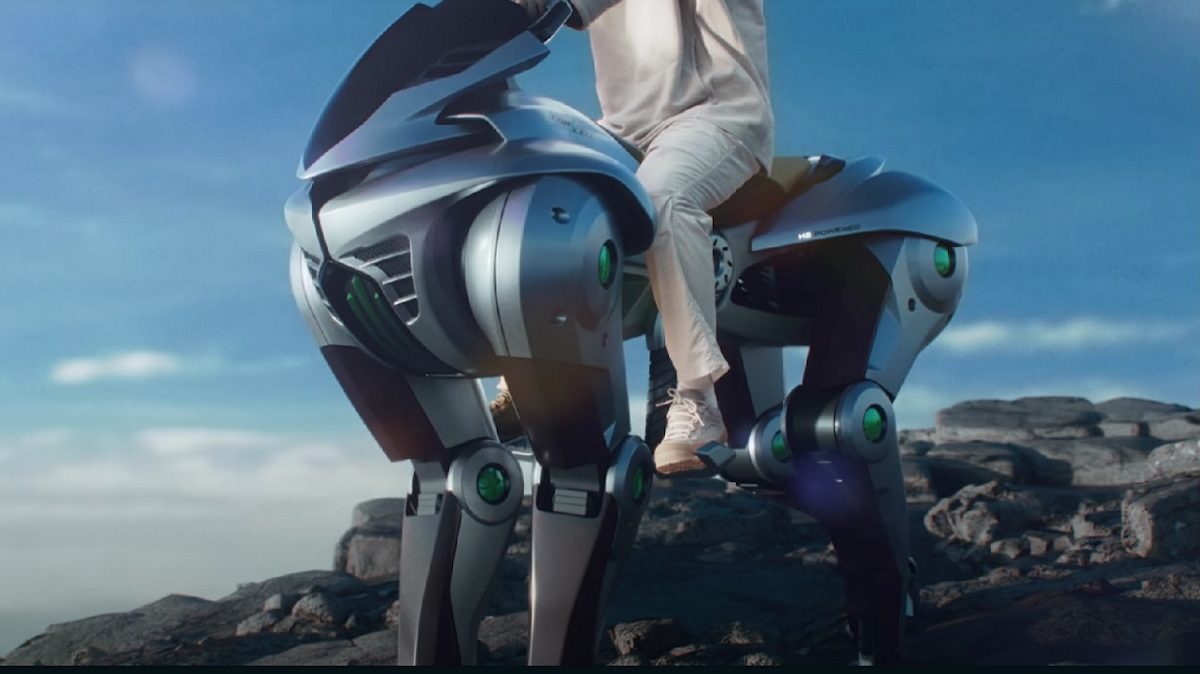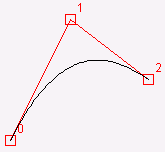Kawasaki has recently revealed its computer-generated concept for the Corleo, a “robotic horse.” The video shows the automated equine galloping through
Like, aside from all of the concerns about the practicality of it, why can’t we just have weird shit? It’s okay for things to be weird. It might be kind of fun. It might be kind of cool. Like, if I were at an amusement park and they offered a ride where you could ride these things, I would pay to ride one.
Agreed. This concept is so absurd but endearing to me
We have horses, we have ATVs.
But what if you want an ATV with legs, or a horse with wheels?
I want an ATV with veins and feelings.
Yeah and we shouldn’t be abusing and expoloiting horses
Maybe it would be more comfortable to ride if it had wheels instead of legs. And then it could be propelled by a single electric motor. And perhaps it could also be propelled by manual effort, maybe some sort of rotary contraption you could manipulate with you legs. Leaving you hands free to steer. Steering would be easier if there was like a bar or something you could hold on to.
You’re crazy, that would never work.
Make the front wheel fucking HUGE, with a small back wheel…
deleted by creator
When Hackworth got back to the post office and looked through the window of the big matter compiler, he saw a large machine taking shape in the dim red light. Its body had already been finished and was now rising slowly as its four legs were compiled underneath. Dr. X had provided Hackworth with a chevaline.
Hackworth noted, not without approval, that this one’s engineers had put a high priority on the virtues of simplicity and strength and a low priority on comfort and style. Very Chinese. No effort was made to disguise it as a real animal. Much of the mechanical business in the legs was exposed so that you could see how the joints and pushrods worked, a little like staring at the wheels of an old steam locomotive. The body looked gaunt and skeletal. It was made of star-shaped connectors where five or six cigarette-size rods would come together, the rods and connectors forming into an irregular web that wrapped around into a geodesic space frame. The rods could change their length. Hackworth knew from seeing the same construction elsewhere that the web could change its size and shape to an amazing degree while providing whatever combination of stiffness and flexibility the controlling system needed at the moment. Inside the space frame Hackworth could see aluminum-plated spheres and ellipsoids, no doubt vacuum-filled, containing the mount’s machine-phase guts: basically some rod logic and an energy source.
The legs compiled quickly, the complicated feet took a little longer. When it was finished, Hackworth released the vacuum and opened the door. “Fold,” he said. The chevaline’s legs buckled, and it lay down on the floor of the M.C. Its space frame contracted as much as it could, and its neck shortened. Hackworth bent down, laced his fingers through the space frame, and lifted the chevaline with one hand. He carried it through the lobby of the post office, past bemused customers, and out the door onto the street.
“Mount,” he said. The chevaline rose into a crouch. Hackworth threw one leg over its saddle, which was padded with some kind of elastomeric stuff, and immediately felt it shoving him into the air. His feet left the ground and flailed around until they found the stirrups. A lumbar support pressed thoughtfully on his kidneys, and then the chevaline trotted into the street and began heading back toward the causeway.
You’re going to give me a Diamond Age chevaline? Sign me up for two of them.
Much of the mechanical business in the legs was exposed so that you could see how the joints and pushrods worked,
FOD damage central.
Eh. Stephenson never said it had to be practical.
In universe, the guy has this compiled (like 3D printing, but sci-fi and badass) at a public post office. This is a setting where nanotechnology is a consumer product. They have molecular gaskets and self-healing paper computers you can fold and crease without damage, and no doubt autorepairable machines. At one point in the book it’s explicitly shown that compiled objects can be easily decomplied in mere moments as well, so even if it’s got a service lifetime measured in single digit hours you could just chuck the thing into the deke hopper and rebuild it fresh and new.
Anyway, apparently the people in that setting have mastered durable synthetic molecular wonder materials, because Hackworth’s chevaline winds up patiently waiting for him essentially parked in a bush for an indeterminate number of years and still works just fine even with moss growing on it when he gets back to it.
(Also, ATM Machine.)
Makes me think of the comic East of West by Jonathan Hickman and Nick Dragotta. The character of Death rode a robot horse:

Cool idea, I doubt it’s feasible.
The explanation of what a robot is was weird
I think it’s technically feasible, but not something that would be affordable any time soon.
Of course it’s feasible, but it’s unlikely to be viable. There’s simply too much efficiency loss in that kind of locomotion. Sure, mech suits are possible, and they’re a developing technology but you’ll never see that tech replace wheels.
Giddyup Buttercup!
It’s a little concerning just how many fallout references im seeing lately.
Okie dokie
computer-generated concept
Otherwise known as AI slop.
Gotta charge my e-horse…
Attila the mecha-hun
The video linked in the article was posted to YouTube on April 3.
I think this may be an April Fools that took a while to filter through the internet.
I really don’t think this concept makes sense. Firstly, I don’t even know if the motion they show would even be physically possible with their proposed technology. In reality, it would be super heavy and would need a LOT of power.
Secondly, it’s a HUGE hazard. it would be incredibly bumpy, probably to the point of injury and/or throwing the rider off. Also, it’s just asking to crush someone’s legs.
Don’t get me wrong, I think rideable legged robots are cool as hell, but this configuration doesn’t make sense until we’re making Westworld style soft robots with fusion reactors or something, or advanced biotech. With near future tech, you’d either need to be sitting within or above the robot, and you’d probably want more legs for stability. If you really want to ride it like a horse I guess you could probably do an 8 leg design with 4 in front and behind the rider, out of leg crushing range.
Hopefully they don’t also invent a way to charge it up using biomass.
Someone call Aloy
“How do we take something as simple as a wheel and make it unnecessarily complex?”
-Kawasaki probably
Hopefully they fired the team on this. Feels like they got high watching power rangers and came up with this.










